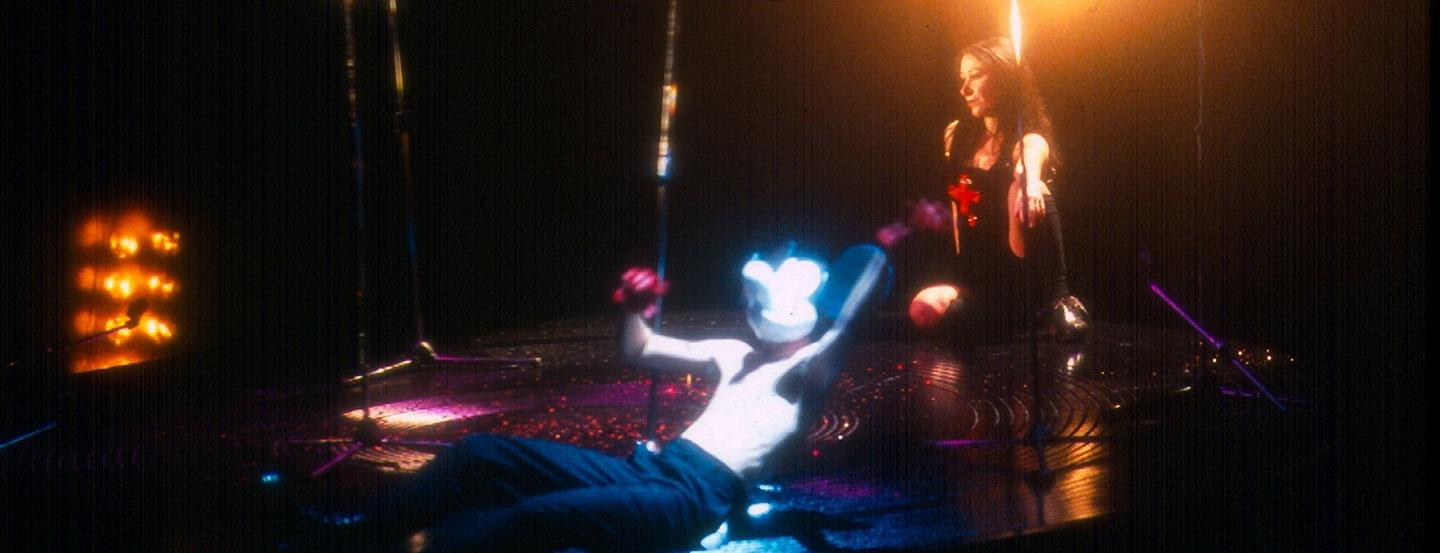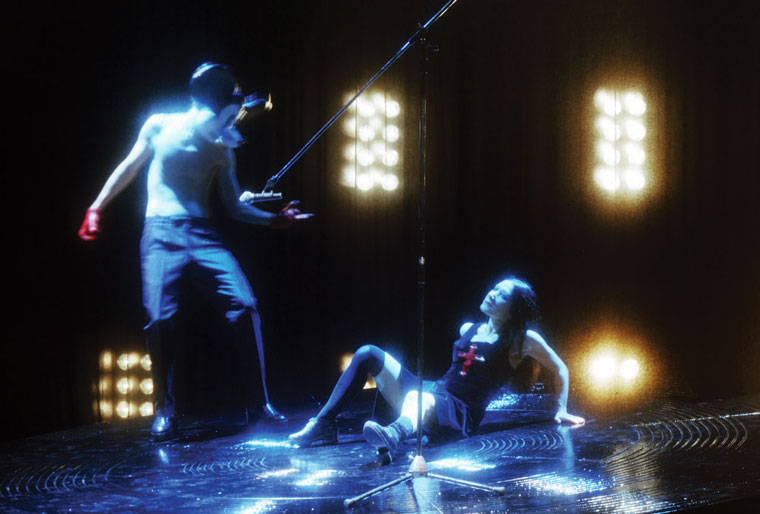for voice, electric guitar, electric bass, drums, samples and electronic sounds
electric guitar: Marco Biniero, Gabriele Bombardini
surround diffusion 7.1
based on the text “La Mano” by Luca Doninelli
screenplay and direction Marco Martinelli
scenes Edoardo Sanchi
light designer Vincent Longuemare
performers
Ermanna Montanari
with Roberto Magnani
light assistant Francesco Catacchio, sound assistant Giovanni Belvisi, scene assistants Cristina Del Zotto, Paolo Fanti, screenplay assistant Maurizio Lupinelli, technical direction Enrico Isola, promotion Francesca Venturi
duration: 60′
production Le Manège.Mons (Belgio), Ravenna Festival (Italia), Ravenna Teatro (Italia), Le Phénix-Scène Nationale de Valenciennes (Francia), in collaboration with Festival delle Colline Torinesi (Italy), Comune di Ravenna, EdisonStudio-Roma
performances
Feb 18-22, 05 – Mons (Belgium), Théâtre des Arbalestriers
Mar 01, 05 – Valenciennes (Francia), Théâtre le Phenix
Jun 24-26, 05 – Ravenna, Ravenna Festival, Teatro Rasi
Jun 29-30, 05 – Torino, Festival delle Colline Torinesi
Jul 30, 05 – Volterra, Volterra Teatro, Teatro Persio Flacco
Jan 20-25, 06 – Ravenna, Teatro Rasi
Jan 31-Feb 5, 06 – Milano, Piccolo Teatro, Teatro Paolo Grassi
Feb 11, 06, Teatro Solvay, Rossignano
Feb 18-19, 06 – Teatro Kismet, Bari
May 4-5, 06 – Teatro Tor Bella Monaca, Roma
May 08, 06 – Urbino, Teatro Raffaello Sanzio
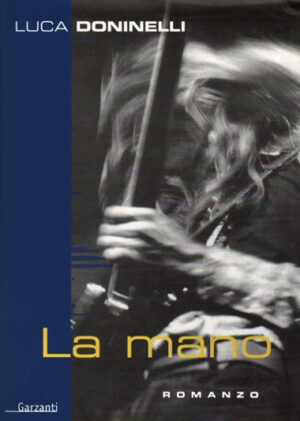
“I have lived my whole life, you can say, for my brother. My brother is Jerry Olsen. The great Jerry Olsen. Now his name is scary because of the way he died. But first he was scary because of the way he played the guitar”.
The hand is a nagging monologue, a broken and syncopated ballad of memories, dreams and hallucinations. In an outburst suspended between sweetness and revulsion, Isabel relives her relationship with her brother Jerry, a rock greats, until his terrible death, after he cuts his left hand – the one that danced on the guitar strings.
The story of this woman with a “half-burned brain” revolves around a song full of notes and symbols – a song by Jerry, of course, which for her is the last point of reference, a message of which, however, she has
lost the meaning.
Through Isabel’s voice, Luca Doninelli lets the protagonists’ obsessions explode. The result is an extreme novel even in form, a merciless and grotesque “subjective”. It is an unstoppable and tortuous flow of sentences, the fragmentary delirium of an intermittent conscience, from which, however, the short-circuit between absolute freedom and the most rigid rule emerges with excruciating clarity.
The hand proceeds like one of Jerry’s guitar solos, “a kind of machine gun that fired, fired, fired, but within this din a thousand different voices could be distinguished: cries of women, angelic songs, voices of black men, trains on the roadbed, motorcycles racing under the desert sun ”.
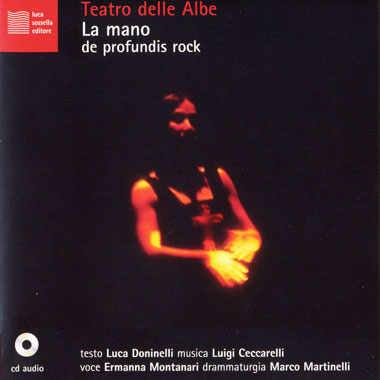
CD– La Mano – de profundis rock
with a 44 pages text
Luca Sossella Editor – 2006
music Luigi Ceccarelli
text Luca Doninelli
screenplay Marco Martinelli
voice Ermanna Montanari
total duration: 53′
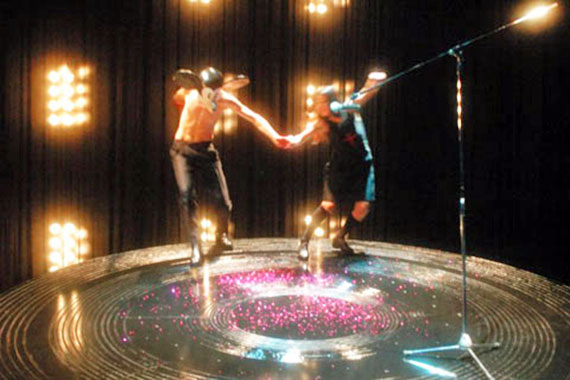
La mano. What remains of rock music
“What sort of music do you play?” asked a journalist. “Earthy” replied Jerry.
“Earthy” is how I too would define Doninelli’s story La mano. It may seem an absurd adjective, but I immediately found it pertinent as well as perfect to describe my music. It defines what I seek in each new composition: a sound with a grain or intrinsic texture which is instantly recognizable – better if rough and harsh – that can be reduced to dust in order to release its pungent smell; a sound both atavistic and immediate, which needs no technical or historical explanations and which does not belong to any predefined genre. A sound that goes directly to the listener, no more.
Perhaps in 20th century culture, among the myriad of musical genres we hear every day, only rock music has achieved this kind of depth. One should not mistake this urge for immediacy with simplicity.
As the easy flow of notes has always derived from a
prodigious technique based on an obsessive training, and so sounds, in order to maintain the detail of their filigree and timbre, need to be treated with the same mastery, distilling their acoustic spectra.
How many times did Alvin Lee rehearse a solo piece?
La mano is a symbolic story about rock music. The sounds in the show accompanying Isis’s monologue are inspired by rock, sustaining her fury and her fragility. The solo instruments – voice, guitar, bass and drums, as in every rock band worth its salt – are recorded, assembled and spatialized by means of a computer. Their qualities are often taken to extremes by means of electronic elaboration, a highly powerful creative instrument that transforms the timbres and rhythms into complex and hallucinatory sonorities. This is a more fascinating choice than the one made by Jerry, who searches in vain for a technological solution to his creative crisis.
The music in the play is divided into nine parts, each one being the synthesis of various genres, ideally embracing rock culture overall. There are important references to Isis’s life story and personality: heavy metal, dark rock, hard rock
and punk, including the many trends derived from them, but also blues, symphonic rock and funk are a source of inspiration. The rock music of the Seventies is the most important reference, when concerts were still based on the quality of the music than with spectacular stage-shows. That is why one can consider La mano a concert in its own right.
Ermanna Montanari’s voice is the opera’s barycentre. It is a meeting point and synthesis between sound, text and images, perfectly embodying Isabel’s total recklessness in extending vocal sonorities beyond the language of the word so they become pure sound in true “earthy” rock style.
Though it deals with rock music, La mano is not intended as a typical work of the rock-opera genre, but rather as the overcoming of that obsolete concept by means of its complete dismantling. As in a operation of microsurgery, the musical elements are explored with a sort of virtual magnifying glass in order to reach the basic texture, and then reassembled with a unique, complex rhythm in synthesis with the whole theatrical context.
L. C.
